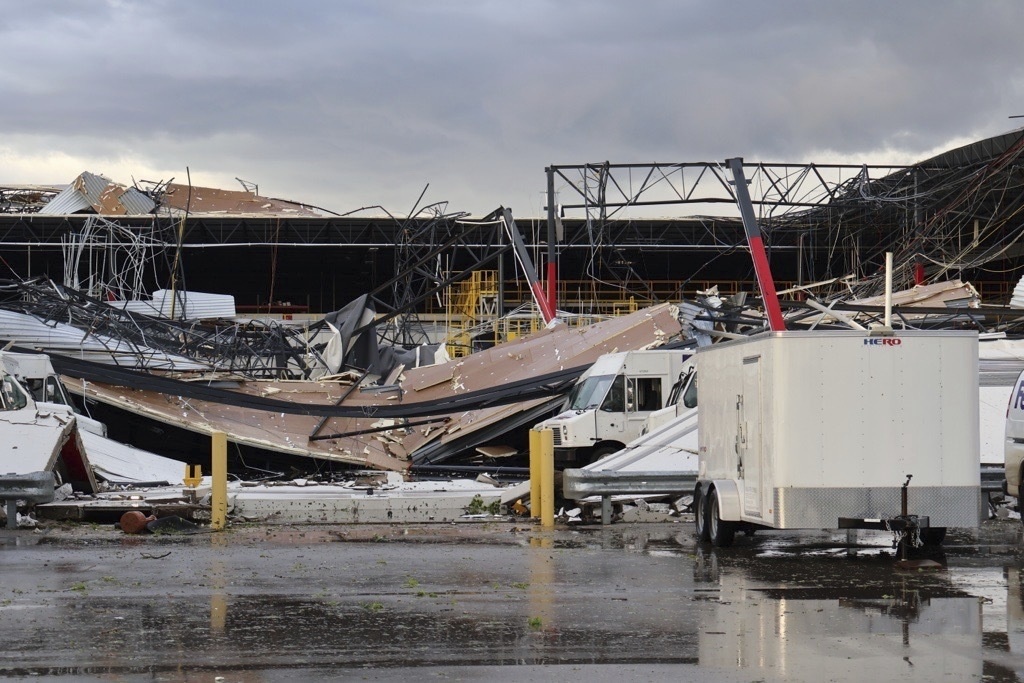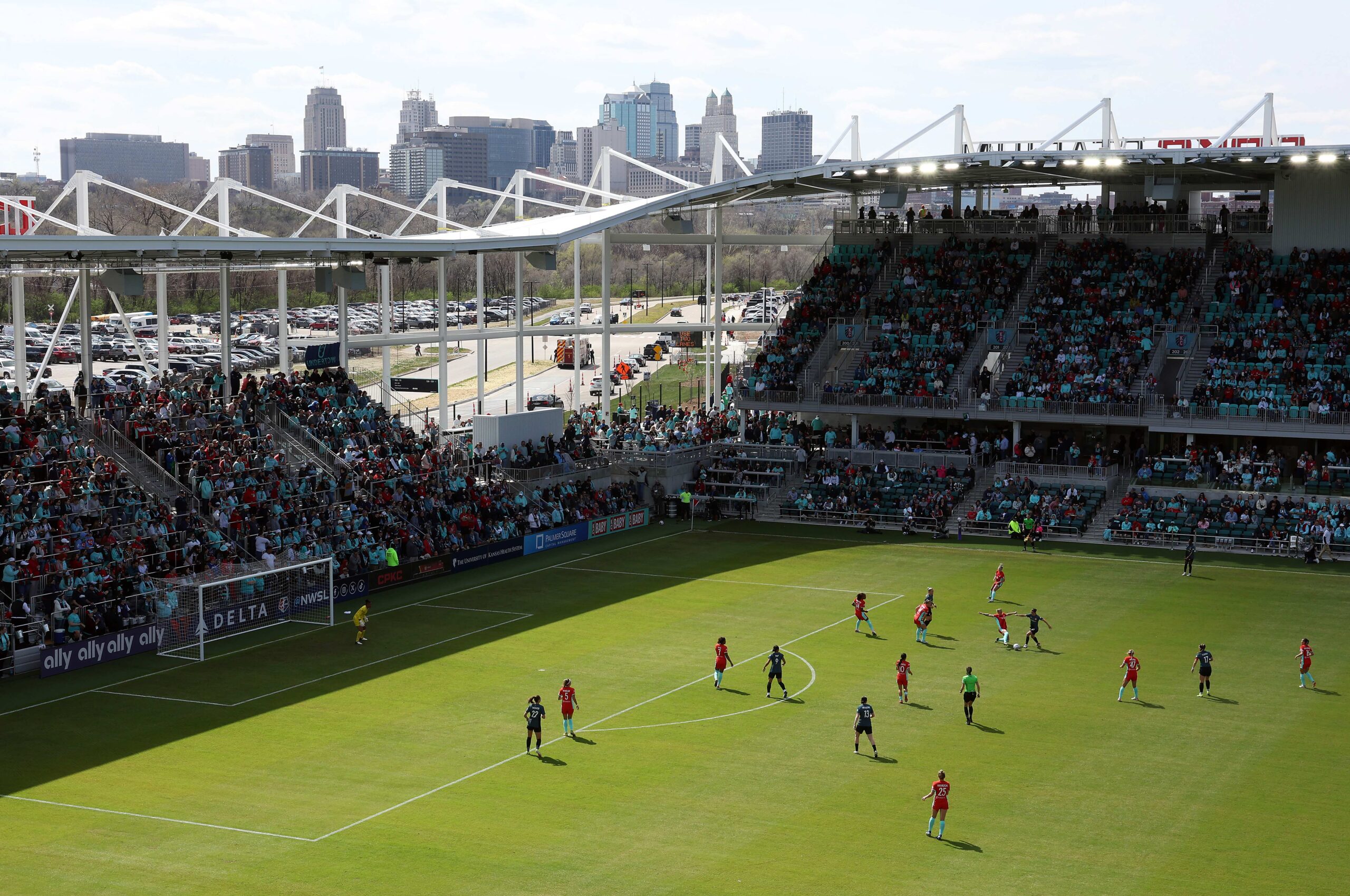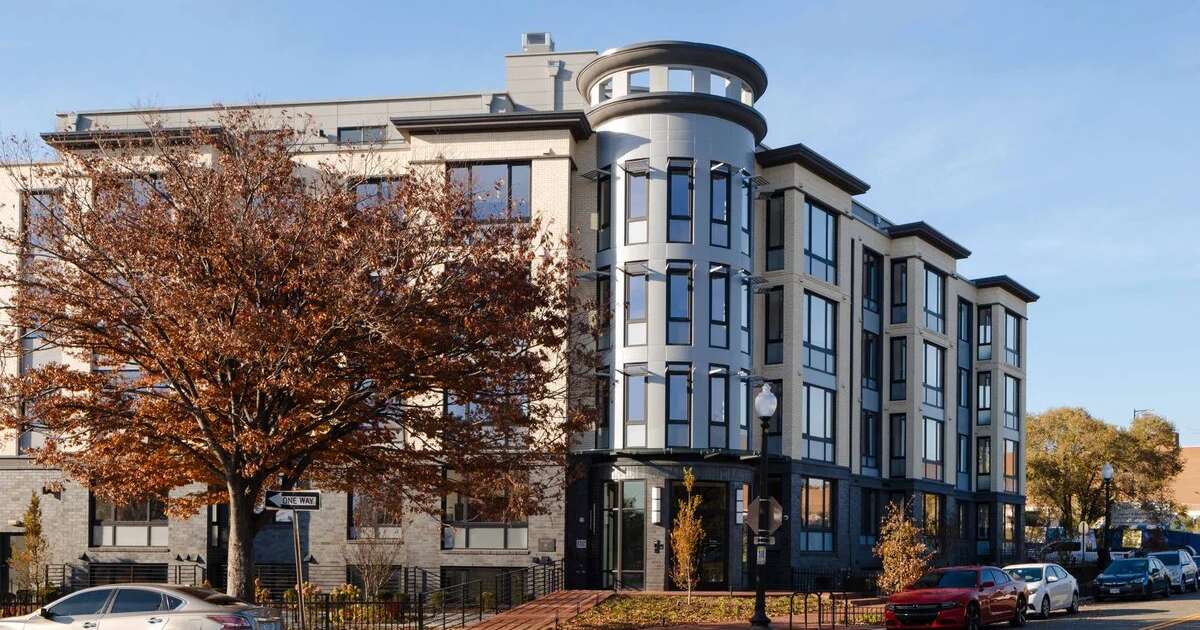Oregon
Oregon homeowners face soaring premiums, few property insurance options over wildfires – Oregon Capital Chronicle

Nancy Matela co-owns a vacation home in a wildfire zone northwest of Bend that has a new, annual property insurance premium of $9,000. It’s more than nine times what the company Safeco charged her a year ago.
That policy remains her only option as well: Her broker couldn’t find her another one.
Matela is among a growing number of homeowners in central, southern and eastern Oregon who have faced higher annual premiums or had their policies canceled when they came up for renewal, with some insurers no longer writing new policies. That change came after the 2020 Labor Day Fires destroyed more than 4,000 homes, becoming the state’s most expensive natural disaster in history, according to state and federal emergency response agencies.
Since then, insurance markets in parts of Oregon have begun to look more like those in California, where some of the largest insurance companies in the country are no longer renewing or writing new policies, and where the number of people turning to a state-backed insurer of last resort has doubled in recent years.
“If you want to know what the next five years look like in Oregon, look at southern California,” said Perry Rhodes, who has sold property insurance policies for Farmers in Bend for the last two decades. “If you want to know what this looks like if things get even worse, look back east to Florida,” he added. Farmers announced last year it would limit new property insurance policies in California and no longer sell any new property policies in Florida.
Rhodes said it used to be extremely rare to find a customer whose property was at such a high risk that he had to refer them to other companies. Now, he said, he sends about half of potential customers to other insurers because Farmers won’t cover them.
“The only homes that we know for sure are going to be eligible are the ones that are, so to speak, right in the middle of town, and right next to the fire department,” he said.
Oregon’s insurance commissioner, Andrew Stolfi, told the Capital Chronicle the exodus of companies offering coverage in parts of Oregon is not as severe as in California, which has been driven by high payouts for recent wildfire losses and state consumer protection laws that previously capped annual insurance premium hikes.
Nevertheless, Oregon lawmakers are aware of the predicament. But recent laws passed by the Legislature to encourage insurance companies to reward customers for hardening their homes and communities against wildfires have had little impact so far, according to more than a dozen policy holders, agents, brokers and industry leaders.
Democratic Sen. Jeff Golden of Ashland, who’s been behind several wildfire proposals, and industry and fire experts say investing in fire-resistant roofs, siding and clearing out vegetation to make communities resilient and accessible to firefighters are the only options to bring insurers back to parts of the state and curb rising premiums.
In the current session, Golden is behind Senate Bill 1511, which would create a one-time $5 million grant program to help Oregonians establish neighborhood protection groups focused on creating and managing defensible space around homes to help fight a wildfire and clearing yards of debris. It would also begin the process of creating a state-backed certification program for wildfire prevention for homes and neighborhoods, to encourage insurers to continue writing policies and to slow rising premiums.
“Absent that, I’m not seeing an obvious path to a viable insurance system for wildfire in the state. If somebody’s got alternatives, I’d like to hear it,” he said.
Golden helped secure over $30 million for home hardening in 2021. But in 2023, the Legislature allocated about 10% of that.
GET THE MORNING HEADLINES DELIVERED TO YOUR INBOX
Rising premiums
In Oregon, premiums are up an average of nearly 30% since 2020, according to the state’s Department of Consumer and Business Services. It reflects nationwide increases, according to several insurance marketplace reports. But in Bend, Ashland, Medford and Hood River, agents said premiums for most people have doubled or quadrupled due to the wildfire risk, and policies under $1,000 per year have become extremely rare.
Agents said policies on some homes near Ashland have risen as much as 600% in the last four years.
Barbara Klein lives in Ashland within a mile from two fire stations. She said her home insurance premium with Allstate nearly tripled in the last five years, from $556 in 2019 to more than $1,400 in 2023. When she got a promotion in the mail from Amica, she contacted the company to see if they could offer a cheaper premium.
“They started my application, but then said that a pop-up window – or something to that effect – showed that they ‘are not taking any more customers from your area – due to fire risks,’” she said in an email. “They said that they never drop a customer, unlike the other companies, but didn’t want further risk from this area.”
Homeowners in Jackson, Hood River, Deschutes, Umatilla and Malheur counties also say they’ve never seen premiums so high.
“Insurers are having to reckon with the fact that there has been a dramatic increase in natural disaster related losses,” said Kenton Brine, president of the Seattle-based nonprofit industry group NW Insurance Council.
He said this has to do with climate change and where people have chosen to build.
“Companies either have to reduce their risk exposure in order to reduce the threat that a major wildfire will wipe them out, or they have to increase premiums, or they have to do both,” Brine said.
He added that companies are also adjusting premiums that have been artificially low in Oregon for years and have not kept up with rising inflation. He said they are also accounting for a reluctance by reinsurance companies, which insure insurance companies, to cover those that sell high-risk home policies.
Nevertheless, executive compensation and company valuations for some of the largest insurers have not declined significantly or at all since 2020. State Farm – the company with the largest share of Oregon’s property insurance market – is worth $131 billion today, an overall increase of $7 billion since 2020. The company’s CEO received more than $24 million in total compensation in 2022, including a $22 million bonus, compared with $10 million in 2019.
Progressive is also worth more: from nearly $58 billion in 2020 to more than $110 billion today. Allstate’s stock is up more than 60% over the last five years, worth nearly $42 billion today, though its CEO’s compensation dropped from $19 million in 2021 to $15 million in 2022, according to the business publication Crain’s Chicago Business.
Quiet retreat
No major insurer has publicly announced a retreat from Oregon as they have in California, Florida and Louisiana, which have all been slammed with repeated natural disasters. But several companies that used to sell property insurance in Oregon and across the West and the U.S. no longer offer it at all. Oregon Mutual and Kemper have stopped selling property insurance, and Nationwide no longer sells one of its property policies for high-value homes.
But a quiet retreat is occurring piecemeal in Oregon, as companies choose to no longer renew or write new policies in some ZIP codes.
Insurance brokers and agents in a dozen interviews told the Capital Chronicle that policies they could have written a year ago for new or renewing customers are declined by insurance companies today. In central Oregon, brokers said Safeco – the state’s second largest insurer – as well as Progressive are effectively no longer writing new policies in certain ZIP codes in and around Bend, Sisters and Sunriver. One said Safeco is not writing new policies on properties over $1.5 million in Redmond, too.
Glenn Greenberg, a spokesperson for Safeco and Liberty Mutual, which owns Safeco, said in an email that the company does not publicly discuss its underwriting guidelines or business decisions, but continues to write new policies in Oregon.
“We do not have any town- or city-wide restrictions for new business in the state,” Greenberg wrote.
Ron Davis, a spokesperson for Progressive did not respond to questions about specific areas where brokers and agents claimed the company was declining coverage.
“While we have taken some actions in Oregon to help manage risk, we continue to write business throughout the state,” he said in an email.
In Ashland and Medford, brokers selling insurance policies for Travelers, Nationwide, Capital Insurance Group and Sublimity said it was nearly impossible to get the companies to underwrite new policies outside of the cities and in rural areas.
Cost of doing nothing
In 2023, a law sponsored by Golden and passed by the Legislature mandates that insurers reflect in their underwriting guidelines how they take into account wildfire mitigation efforts like home hardening and explain on their websites how such efforts impact rates or any discounts a property owner could receive. This has had little to no impact on coverage so far, according to interviews with brokers and homeowners.
The Capital Chronicle reached out to several of the largest insurers in the state to ask if they reward home hardening with lower or stable premiums. A representative of State Farm, with more than one-fifth of the state’s property insurance market, said the company would not. April Locke, a spokesperson for Capital Insurance Group, which covers a small number of Oregonian policies, said the same.
“We have specific underwriting standards related to locations exposed to the hazard of wildfire and do not offer accommodations related to our standards, nor our pricing, for any wildfire mitigation actions undertaken for a specific location,” she said in an email.
Spokespeople for Safeco, Allstate, Foremost and Travelers did not respond to emailed questions and requests for comment about home hardening. But one of the state’s five biggest insurers said it would start rewarding customers this year.
“We will start offering discounts in July 2024 for customers who have implemented various Firewise fire reduction measures,” said Carly Kraft, a spokesperson for Farmers, which has about 9% of Oregon’s property insurance market.
The measures include ignition-resistant siding and roofing and clearing out shrubbery and trees around the home, she said.
Jeff Melville, who owns High Desert Insurance in Bend, said companies are looking at a whole area when they determine risk, not individual homes or even individual neighborhoods.
“Insurance companies don’t say: ‘Well, Steve lives on this street, and he’s got defensible space, but Billy lives four houses down and he hasn’t done anything yet,’” he said. “They really aren’t going to take a look at each house, there’s just not enough premium there. They’d rather just say: ‘We’re not insuring any of them.’”
Still, Bob Horton, director of research and policy for the Wilsonville-based Western Fire Chiefs Association, said investing in home and community hardening is the best option state leaders have to lessen the pain of a chaotic insurance market and increasing wildfire risks with climate change.
“The cost of insurance is going to go up. I don’t see a scenario where you do work around your home and your insurance rate goes down,” he said. But, they could help them from continuing to sky rocket and could help some people keep policies they currently have.
They also have the added benefit of potentially saving homes and neighborhoods, he said.
“There’s a cost to doing nothing,” he said.
Limited authority
Oregon law requires insurers to include fire coverage in home insurance policies, but it does not prohibit insurers from not renewing policies or choosing not to insure properties due to a wildfire risk.
Stolfi, the insurance commissioner, said he has little regulatory authority when it comes to rising premiums or who gets covered. Actuaries – professional risk assessors – review policies and requests to raise premiums from insurers in Oregon, but mostly to ensure they comply with state and federal laws.
Some insurance agents said they are waiting for Oregon to follow California, and to allow insurers to offer home policies in high-risk areas that exclude coverage for wildfires. Instead, property owners could buy an additional policy meant to cover wildfires from Lloyd’s of London, a marketplace of insurers that share risk, or from the state-backed plan of last resort.
FAIR plans, Fair Access to Insurance Requirements plans, cover some damage or loss on properties that are considered too risky for companies to insure. They exist in more than half of states and are subsidized by taxpayers and insurance companies. They often come with higher-than-average premiums and less coverage. Oregon’s FAIR plan will only pay up to $600,000 for damage or loss.
Demand for California FAIR plans has doubled in the last four years and now covers 3% of all California property owners.
In Oregon, FAIR plans cover just a tiny fraction of the market: about 1,700 homes, farms and commercial properties, down from a high of 2,000 a decade ago. But the number of new applicants rose last year to 500 new applicants, compared with 168 in 2020.
That trend could continue. Brokers and insurance experts doubt the market will improve much.
“Carriers are just not interested in writing new business or growing,” said Greg White, owner of Reinholdt & O’Harra Insurance in Ashland.
He said typically the market rebounds, but he fears it might not this time.
“I don’t know that we’re gonna get out of this one. This one is different,” he said.

Oregon
Police seek info in poisoning of 3 wolves, 2 eagles, cougar, coyote, dogs in Oregon

Officials are offering a $25,000 reward for information about the illegal poisoning of three gray wolves, two golden eagles and other wildlife in Wallowa County.
It’s the latest in a spate of poisonings that have killed 19 wolves since 2015 and even killed domestic dogs recently in Eastern Oregon.
“The target was likely a wolf, but the collateral damage in northeast Oregon’s ongoing poisoning cases now includes golden eagles, dogs, and other carnivores,” the Oregon Department of Fish and Wildlife said.
Oregon wolf population flat for fourth straight year
Wolves, eagles killed in Eastern Oregon in February poisoning
In February and March, Oregon State Police located the remains of three wolves, two eagles and one cougar and coyote in the Lightning Creek drainage, a tributary to the Imnaha River about 11 miles northeast of Imnaha.
Testing and examinations concluded all were poisoned, a news release said.
Poisoning a wolf is a Class C Felony in Oregon, punishable by a $125,000 fine and up to five years in prison. Poaching federally protected wildlife such as golden eagles, or poaching multiple animals, also elevates the crime from a misdemeanor to a felony, according to new sentencing guidelines passed by the state Legislature in 2019.
The Fish and Wildlife Service is offering a $25,000 reward for any information that leads to an arrest, a criminal conviction or civil penalty assessment of the incident.
Hunting preference points are also being offered for information in the case.
Oregon officials warn dog owners
State officials said anyone traveling with dogs in northeast Oregon’s national forests needs to keep their eyes out.
“Hikers, mushroom pickers, wildlife watchers, hunters and anglers should take steps to protect their pets when recreating in northeast Oregon,” the Oregon Department of Fish and Wildlife said.
Additional wolves, domestic dogs also killed in poisonings
In addition to the most recent incident, the OSP Fish & Wildlife Division is also asking for the public’s assistance in identifying those responsible for additional wolf, wildlife and deaths of domestic dogs in several other locations in Wallowa County.
Police highlighted the following cases:
- In July and October 2023, police responded to the unlawful take of two wolves poisoned in the Chesnimnus Wildlife Management Unit, approximately 30 miles northeast of Enterprise. Poisoning was determined to be the cause of death.
- In April, police responded to the unlawful take of a wolf, which is suspected of being poisoned in the Wenaha Wildlife Management Unit, approximately 5 miles west of Troy.
- In April, police responded to a domestic dog which was poisoned and within the Sled Springs Wildlife Management. This location is approximately 9 miles north of Enterprise. The poisoning was confirmed through a veterinary clinic.
- In April, police responded to another domestic dog which is suspected of being poisoned within the Snake River Management Unit. This location is approximately 6 miles north of Imnaha.
How to report information about the cases
Anyone with information about the cases can call the U.S. Fish and Wildlife Service at (503) 682-6131, or Oregon State Police Dispatch at (800) 452-7888, *OSP (*677) or email TIP@osp.oregon.gov. Callers may remain anonymous. To report a wildlife crime to the U.S. Fish and Wildlife Service, members of the public can also do so online at fws.gov/wildlife-crime-tips.
How to keep dogs safe
ODFW offered this advice on keeping pets safe from poison.
- Keep your dog on a leash and under control. Don’t let them eat anything they find in the forest.
- Learn what to carry to induce vomiting in your dog before venturing out — ask your veterinarian for advice. If you suspect that your pet may have been poisoned, visit a veterinarian immediately.
- Watch for dead birds or mammals (scavengers) which can indicate poison.
- Know what a poisoned carcass looks like. This may be tricky to spot but watch for substances on the carcass that seem unnatural (powders or strange colors).
- Be on the lookout for suspicious bait. An unnatural item in the woods such as a meatball or piece of steak could be an indicator that someone is trying to poison wildlife in the area.
- Don’t approach anyone who you suspect of poisoning. Get some details such as license plate, description of vehicle and persons, date and time of the incident.
Cleanup from poisoning a challenge
ODFW received a mortality alert on Feb. 3 for a collared wolf in the remote Hells Canyon National Recreation Area.
Staff were able to confirm the breeding female of the pack was dead and later located the dead breeding male and a juvenile.
According to officials, ODFW and OSF Fish and Wildlife continued to find dead animals over the next several weeks including the golden eagles, cougar, coyote, dead Steller’s jay and black-billed magpie.
ODFW and OSP F&W found the source to be a cow carcass laced with poison in a creek in the Imnaha River drainage.
Working with the Oregon Department of Environmental Quality, ODFW staff dressed in hazmat gear put the cow carcass on a tarp and into a net that was taken out of the creek by helicopter and then taken to a facility in Arlington to handle the toxic waste and dispose of it, according to officials.
“Northeast Oregon is known for its natural resources and outdoor opportunities, so it’s just terrible to have this going on,” said Bernadette Graham-Hudson, ODFW wildlife division administrator. “We hope whoever is poisoning wildlife is quickly caught and punished for the safety of people, wildlife, and pets in northeast Oregon.”
Zach Urness has been an outdoors reporter in Oregon for 16 years and is host of the Explore Oregon Podcast. Urness is the author of “Best Hikes with Kids: Oregon” and “Hiking Southern Oregon.” He can be reached at zurness@StatesmanJournal.com or (503) 399-6801. Find him on X at @ZachsORoutdoors.
Oregon
Oregon is home to 2 of the 10 most polluted cities in the US

(KPTV) – The Beaver State, despite being known for having residents who are passionate about climate change and the environment, has been found to contain some of the most polluted air in the entire country.
A new report shows that two out of the top 10 locations with the worst air quality are in Oregon.
Eugene was found to be in fourth place and the Grants Pass-Medford area came in at eighth place.
Bakersfield, California took the top spot as the US city with the most air pollution.
Just last month, Oregon environmental regulators discussed a push to drastically reduce greenhouse gasses from fossil fuel companies.
The state also adopted a statewide Climate Protection Plan in 2021, which was promised to be one of the strongest climate action plans in the country.
This new study, assembled by the American Lung Association, showed that there are 4,589 pediatric and 36,325 adult asthma cases in Eugene-Springfield which is home to 382,353 people.
SEE ALSO:
Eugene-Springfield was noted for having particularly high levels of pollution coming from car emissions, wood-burning stoves and diesel engines.
The San Francisco Bay Area ranked just under Eugene-Springfield in fifth place due to transportation emissions, wildfires, and industrial storm water runoff.

Los Angeles was listed next in sixth place due to burning of fossil fuels, especially by cars, ships, planes, manufacturing, and wildfires.
Medford earned the eighth spot, followed by Phoenix and Fairbanks, Alaska.
The study showed 4,277 pediatric and 28,473 adult asthma cases in the Medford-Grants Pass area out of a population of 309,374.
Data showed the US is responsible for 17 percent of total global greenhouse emissions.
Copyright 2024 KPTV-KPDX. All rights reserved.
Oregon
Oregon Breweries with Rooftop Patios — New School Beer + Cider

10 Barrel Brewing Portland
1411 NW Flanders St, Portland, OR 97209
Shortly after expanding to Portland, the Bend, OR based 10 Barrel Brewing added a rooftop bar to the NW PDX Pearl District brewpub. This location was already special to the 10 Barrel Brewing brand, as it market their first foray outside of their hometown and the addition of a new brewery and chance to bring in more top brewing talent. It got off to an excellent start with the hire of head brewer Whitney Burnside, at the time an alumni of Pelican Brewing, Elysian Brewing, and Upright Brewing. After years of making excellent award-winning beers under 10 Barrel’s parent company Anheuser-Busch, Burnside left to open Grand Fir Brewing and 10 Barrel was sold to Tilray Beverages.
Now under the Tilray Brands banner, 10 Barrel Brewing is once again considered “craft beer” again by the independent industry trade organization the Brewers Association. They also named new 10 Barrel Portland head brewer Brandon Whalen to lead the team, and Whalen comes with brewing chops from his time at Breakside Brewery where he helped craft beers from the most award-winning brewery in Oregon.
The 10 Barrel Brewing Portland location has an 1,800 sf rooftop addition with a full-sized bar serving cocktails and 20 beers on tap, with a full food menu of staples like pizza, burgers, and those over-the-top BBQ chips gorgonzola steak nachos. Construction of the new outdoor space occurred above their operating restaurant and included the addition of two staircases for roof access. The deck now provides seating for an additional 85 people and is open year-round. Originally a seasonal only feature, the rooftop is now partially enclosed and covered for bad weather and opens up to partial views of the skyline, West hills, and Pearl District neighborhood shops and people watching.
-

 Politics1 week ago
Politics1 week ago'You need to stop': Gov. Noem lashes out during heated interview over book anecdote about killing dog
-

 News1 week ago
News1 week agoMan, 75, confesses to killing wife in hospital because he couldn’t afford her care, court documents say
-

 Politics1 week ago
Politics1 week agoRFK Jr said a worm ate part of his brain and died in his head
-

 World1 week ago
World1 week agoPentagon chief confirms US pause on weapons shipment to Israel
-

 Politics1 week ago
Politics1 week agoHere's what GOP rebels want from Johnson amid threats to oust him from speakership
-

 World1 week ago
World1 week agoPro-Palestine protests: How some universities reached deals with students
-

 World1 week ago
World1 week agoConvicted MEP's expense claims must be published: EU court
-

 Politics1 week ago
Politics1 week agoCalifornia Gov Gavin Newsom roasted over video promoting state's ‘record’ tourism: ‘Smoke and mirrors’




















